There are two amazing coastal cities in Croatia that are definitely worth a visit – Split and Dubrovnik.
But which one is better? It really depends on what you’re looking for in a vacation.
It can be difficult to decide between these two cities. Both Split and Dubrovnik are amazing places, with plenty of things to see and do.
So, how do you choose? In this blog post, we will compare Split and Dubrovnik and help you decide which one is right for you!
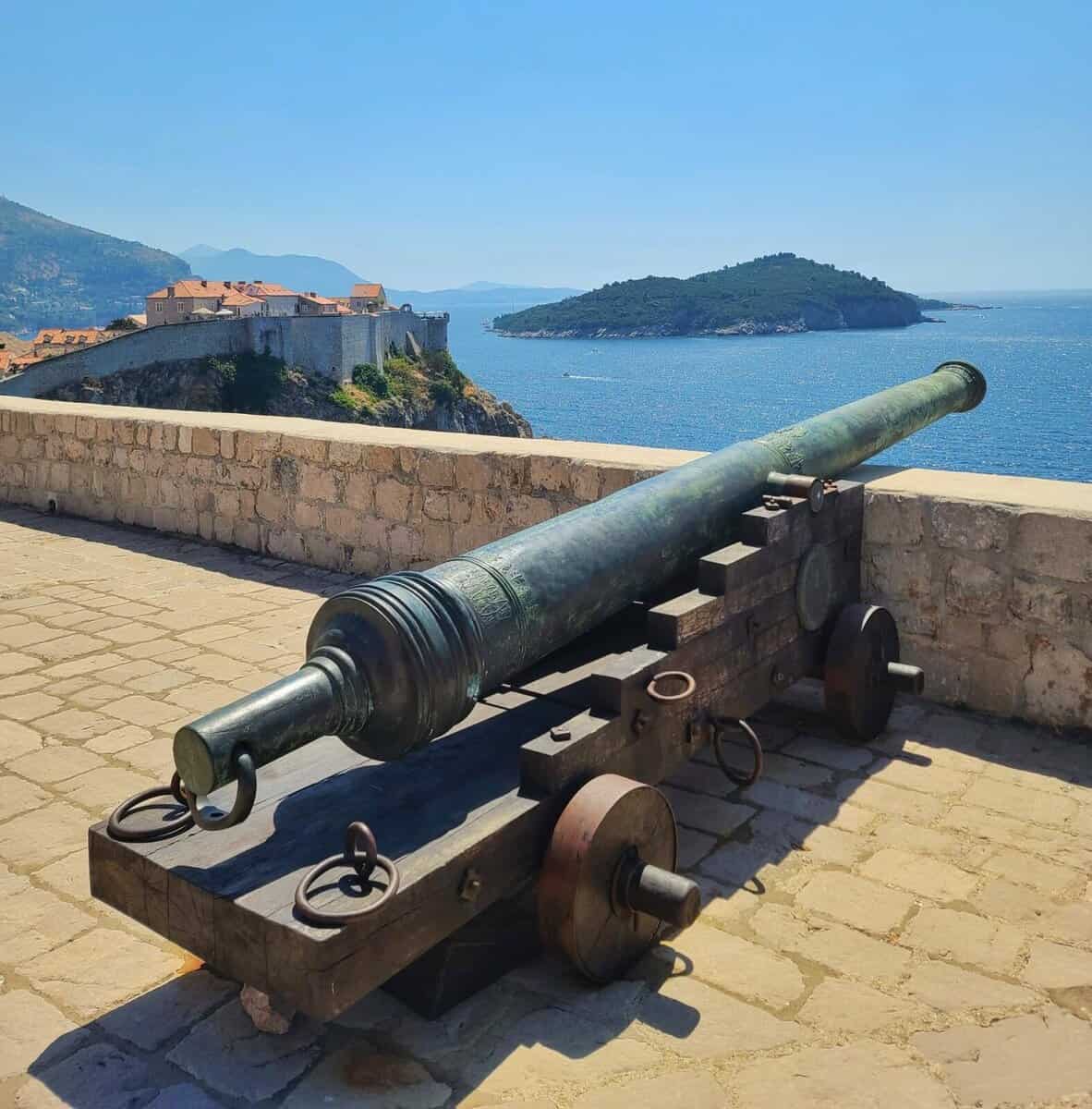
1. Find Out If Split Or Dubrovnik Is Better
Split is the largest city in Croatia and the capital of Dalmatia. It is a beautiful city, with plenty of history and culture. Split is also a great place to visit if you want to enjoy the Croatian coastline.
Dubrovnik, on the other hand, is a smaller city located in southern Croatia. Dubrovnik is known for its stunning architecture and its picturesque Old Town.
Both Split and Dubrovnik are great places to visit, but they each have their own unique charm.
It’s a tough choice, but we think Split is the better option. Here’s why:
- Split is more centrally located than Dubrovnik, so it’s a great base for exploring the rest of Croatia. Dubrovnik is further south and therefore requires more travel time to get to other parts of the country.
- Split has a more diverse range of activities and attractions than Dubrovnik. From its UNESCO-listed Diocletian’s Palace to its lively waterfront restaurants and bars, Split has something for everyone.
- Split is generally less crowded (and more spread out) than Dubrovnik, so you’ll be able to enjoy your holiday without having to fight for space on the beaches or in the city streets.
- Split is a bit cheaper than Dubrovnik, so you’ll be able to stretch your budget a little further. So if you’re trying to decide between Split and Dubrovnik, we say go with Split!
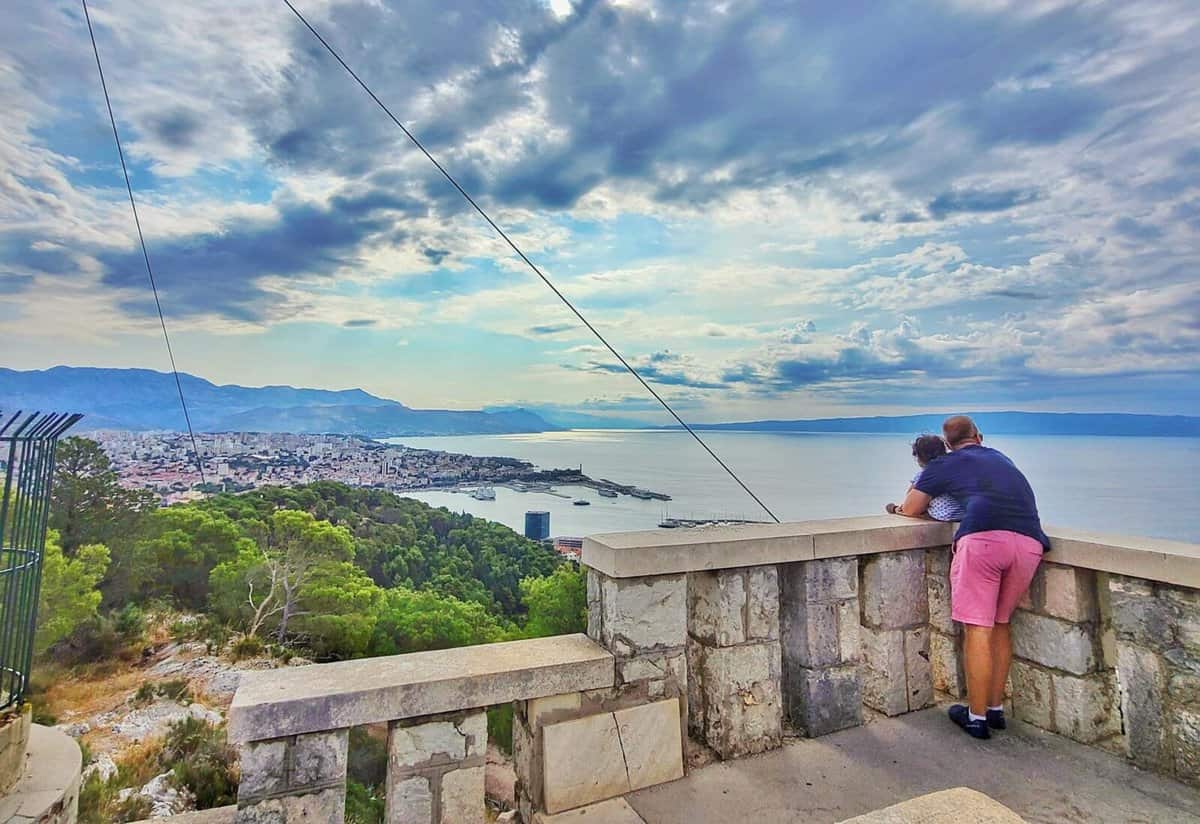
We chose Split for our 3 week stay in Croatia and loved feeling less like tourists and more like “locals.”
In this city we didn’t feel overwhelmed with tons of people and loved having the ability to hang out as a family at one of the beaches or the park at Marjan Hill.
There were plenty of restaurants available to us away from the main areas so we enjoyed lots of local meals out as a family.
A Little About Split
Nestled on the coast of the Adriatic Sea, Split is a popular destination for tourists wanting to enjoy the sun and the sea. But there’s more to Split than just its beaches.
Here are a few things to keep in mind if you’re planning a visit.
- Split is located in the Dalmatian region of Croatia, which is known for its sunny weather and beautiful coastline. However, Split is also a historic city with a long and complicated history. That history is reflected in the architecture of the city, which mixes Roman, Gothic, and Renaissance elements.
- Although English is widely spoken in Croatia, you may find that locals in Split prefer to use Croatian when talking to tourists. If you don’t know any Croatian, don’t worry – most people will be happy to help you out if you need it.
- Split can be quite crowded during peak tourist season (which runs from June to August). If you’re looking to avoid the crowds, consider visiting during shoulder season (April-May or September-October). You’ll still be able enjoy all it has to offer but with less chaos.
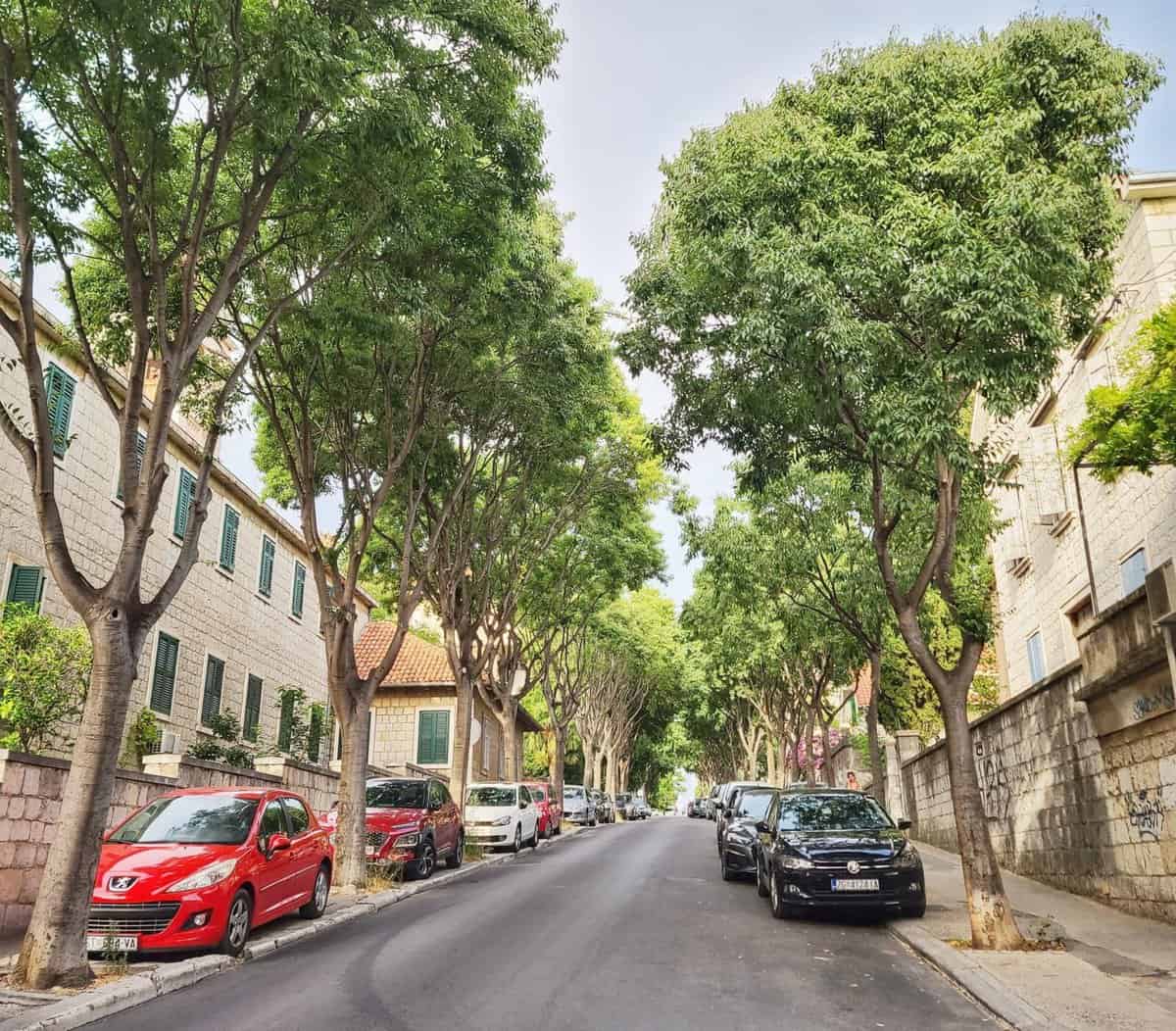
Split is home to a number of historic sites, including the Diocletian Palace, which was built by Roman Emperor Diocletian in the 4th century AD.
The palace complex is now a UNESCO World Heritage Site and one of Croatia’s most popular tourist attractions.
When visiting Split, be sure to try some of the local specialties, like Dalmatian prosciutto!
A Little About Dubrovnik
Dubrovnik is a city on the coast of Croatia that is rich in history and culture.
Visitors to Dubrovnik can explore the city’s many medieval churches and palaces, or take a cable car up to Mount Srđ for panoramic views of the city.
Dubrovnik is also home to some of Croatia’s best-known beaches, such as Banje Beach and Lapad Beach.
When visiting Dubrovnik, be sure to try some of the local specialties such as ćevapi (minced meat grilled on a skewer) and crni rižot (a black risotto made with squid ink).
And don’t forget to enjoy a refreshing glass of Croatian wine while taking in the stunning views of this beautiful city.
2. Which Offers More For History Lovers
Dubrovnik Old Town
If you’re interested in history, then Dubrovnik is the clear winner. The city is full of medieval architecture, and you can even walk around the old city walls
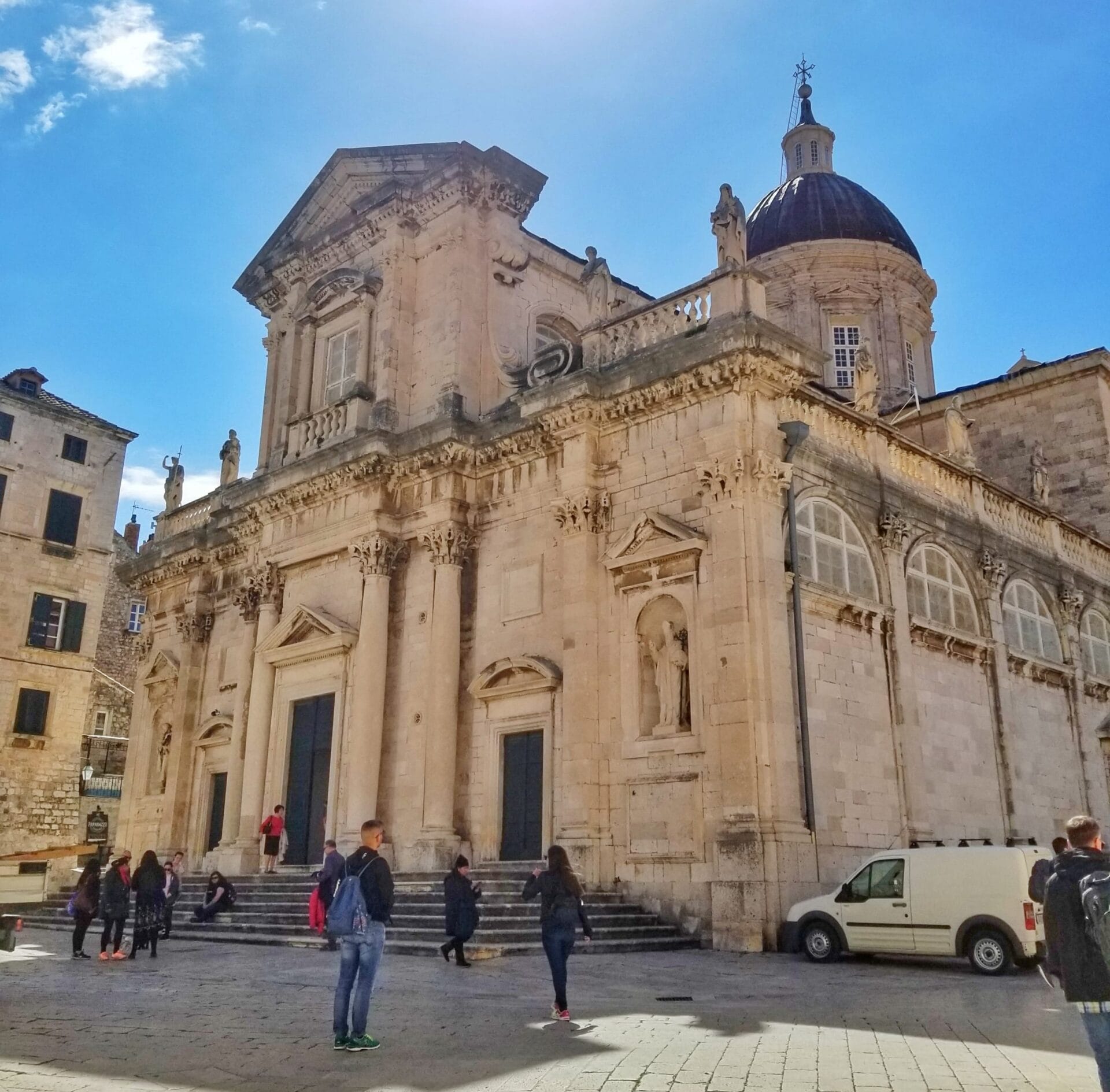
Dubrovnik Old Town is a must-see for any visitor to Croatia.
The well-preserved medieval city is surrounded by imposing stone walls, and its winding streets are lined with beautiful Baroque buildings.
It is also home to a number of impressive churches, including the 16th-century Dubrovnik Cathedral which has marble floor and an altar decorated with gold leaf.
Founded in the 7th century, it flourished as a maritime republic from the 14th to the 18th century.
The Old Town is enclosed by a thick stone wall and has many fortifications, including three limestone forts:
- Minčeta Tower
- Bokar Fortress
- Revelin Fortress
The main street, Placa, runs along the city walls and is lined with Gothic and Renaissance palaces.
This is where you will find many tourists if they are not walking the walls, so you can imagine, it can get quite packed during the summer busy season.
In addition to its architectural significance, Dubrovnik Old Town is also of great historical importance.
The city was once an independent republic, and it played a significant role in the maritime trade of the Mediterranean.
Today, Dubrovnik Old Town is a UNESCO World Heritage Site, and it is one of the most popular tourist destinations in Croatia.
Split Old Town
Split, on the other hand, is more of a modern city with Roman ruins.
Split Old Town is a historical site located in Split, Croatia. The site includes the remains of a Roman palace, as well as a number of medieval churches and other structures.
Split Old Town was added to the UNESCO World Heritage List in 1979.
Although Split Old Town is best known for its Roman ruins, the site is also home to a number of medieval churches.
These include the Cathedral of Saint Domnius, which was built in the 4th century AD, and the Church of Saint Anne, which was built in the 13th century.
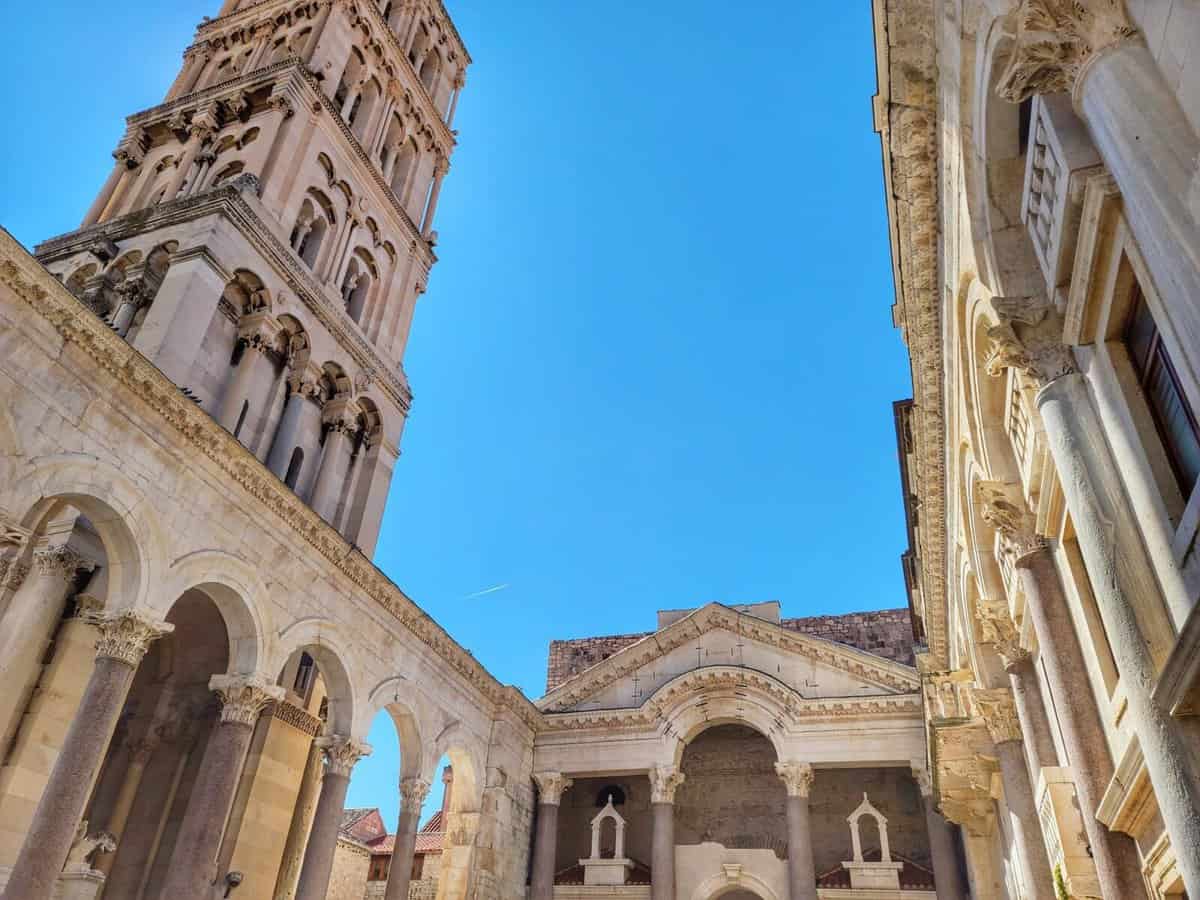
In addition to its churches, Split Old Town also contains a number of other notable structures, such as the City Hall, which was built in the 15th century, and the Palace of Diocletian, which was built in the 3rd century AD.
For a more modern experience, Split Old Town has plenty to offer as well. The Riva, Split’s promenade, is lined with cafes and restaurants where you can enjoy a coffee or a meal with a view.
And if you want to do some shopping, Split Old Town is full of boutique shops selling everything from clothes to locally made souvenirs.
In a nutshell, If you’re looking for a truly enchanting experience, Dubrovnik’s Old Town is the place to go.
3. Finding The Best Beaches
When it comes to beaches, Split has more to offer. There are several sandy beaches in Split, as well as a beach that’s right in the city center.
Dubrovnik also has some nice beaches, but they’re not as easy to get to. However, Banje Beach is easy to walk to from Dubrovnik Old Town.
Be aware that this beach is quite small and packed full in the summer!
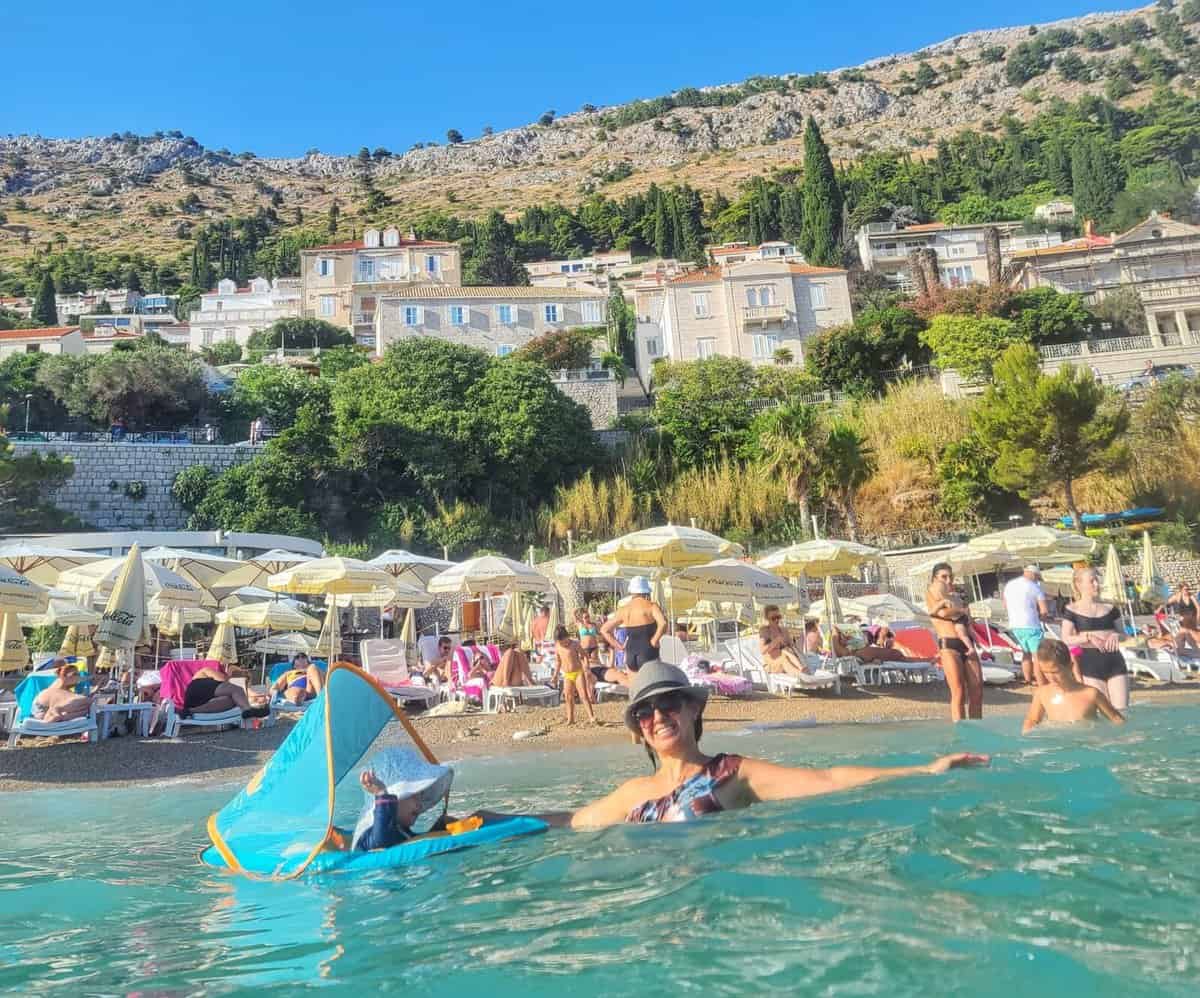
Split has several large, well-known beaches that are perfect for swimming, sunbathing, and people watching.
They’re also usually less crowded than Dubrovnik beaches (also because they are more spread out). The most popular Split beaches are Bacvice and Obojena Dolina.
Bacvice is a great choice if you’re looking for a beach with lots of amenities like restaurants, bars, and parasailing.
Obojena Dolina is a bit more low-key, but it’s still beautiful and has excellent swimming and sunbathing conditions. Other great beaches in Split include Žnjan and Firule beaches.
If you’re interested in seeing more locals at the beach, Split is the place to go.
Dubrovnik beaches tend to be full of tourists, so you’ll have a more authentic experience if you choose Split instead.
4. Things To Do and Day Trips: Split Vs. Dubrovnik
Split is also the better choice if you’re looking for things to do. There are plenty of museums and galleries, as well as a lively nightlife scene.
Dubrovnik is a bit more subdued, but it’s still a beautiful city to explore.
What Dubrovnik Offers
Dubrovnik has some wonderful things to see and do which can mostly be done all in one day. One of the best ways to get an overview of the city is to ride the cable car up to Mount Srđ.
From here you can see the Old Town, as well as Croatian islands of Lokrum and Cavtat.
If you’re feeling energetic, you can hike down to the Old Town, or take the easy way back down on the cable car.
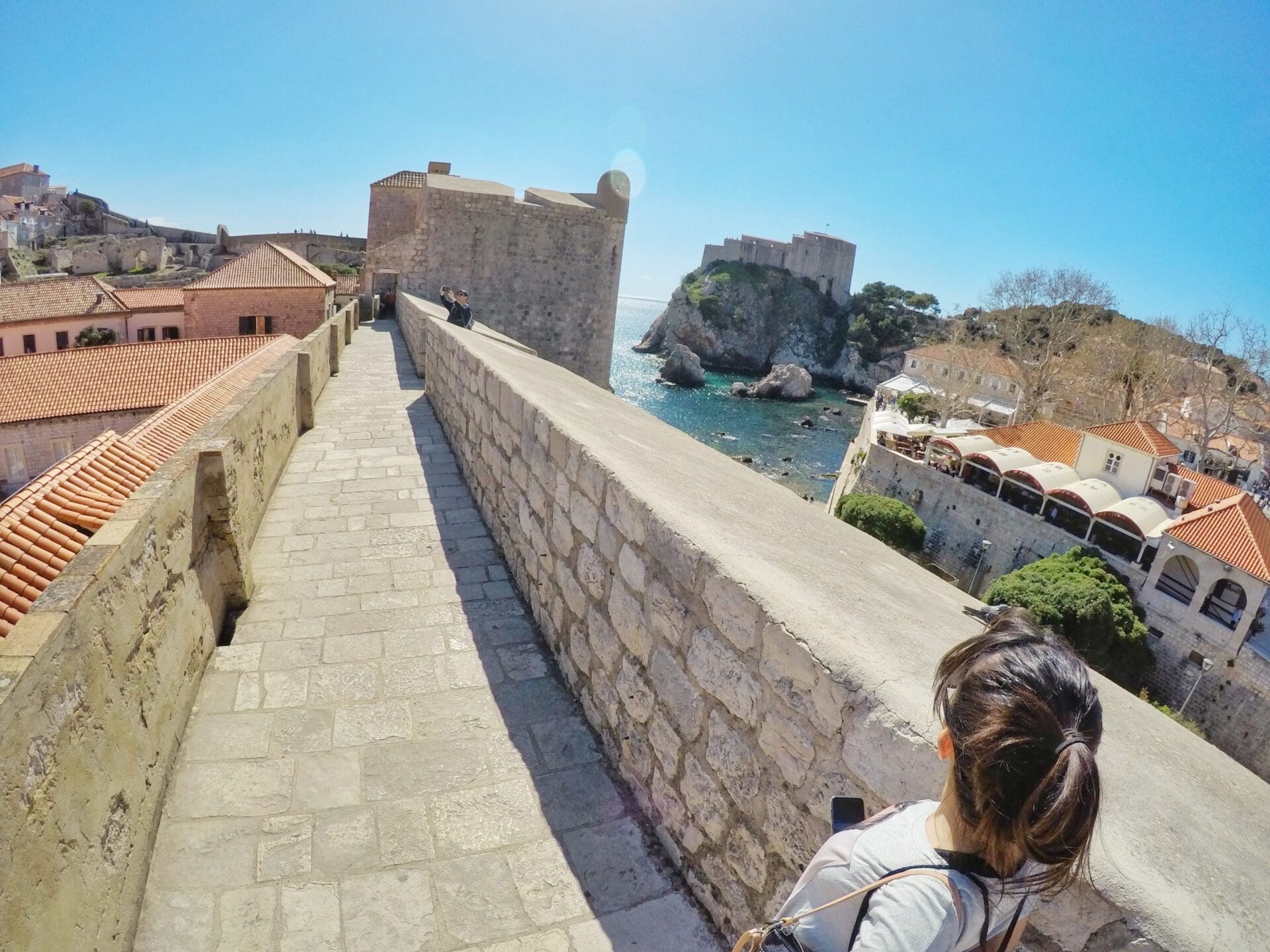
Another must-see in Dubrovnik is one of its medieval forts – either Lovrijenac or Revelin. Both offer stunning views over the city walls, and are steeped in history.
If you’re looking for a more relaxed activity, then head to one of Dubrovnik’s many beaches.
Banje Beach is the most popular beach in Dubrovnik, but if you’re looking for something a little quieter then try Copacabana Beach or Lapad Beach.
Aside from enjoying the cities stunning architecture, visitors can take a walking tour of the old city, visit one of Dubrovnik’s many museums, or even go on a boat tour of the city’s harbor.
For a day trip, Cavtat offers some tranquility and natural beauty and it highly recommended!
What Split Offers
This vibrant city is packed with options for things to see and do.
From exploring the city’s ancient history to enjoying its delicious food and drink, there’s something for everyone in Split.
Visitors can also take in Split’s natural beauty at parks like Marjan Hill or Bene Beach. Just outside the city center, a stopover at Fortress Klis is worthwhile.
Visitors can explore the ruins of the fortress, as well as enjoy panoramic views of Split and the surrounding area. For history buffs, Fortress Klis is a must-see destination.
But even if you’re not interested in history, the Fortress is worth a visit for its incredible views alone.
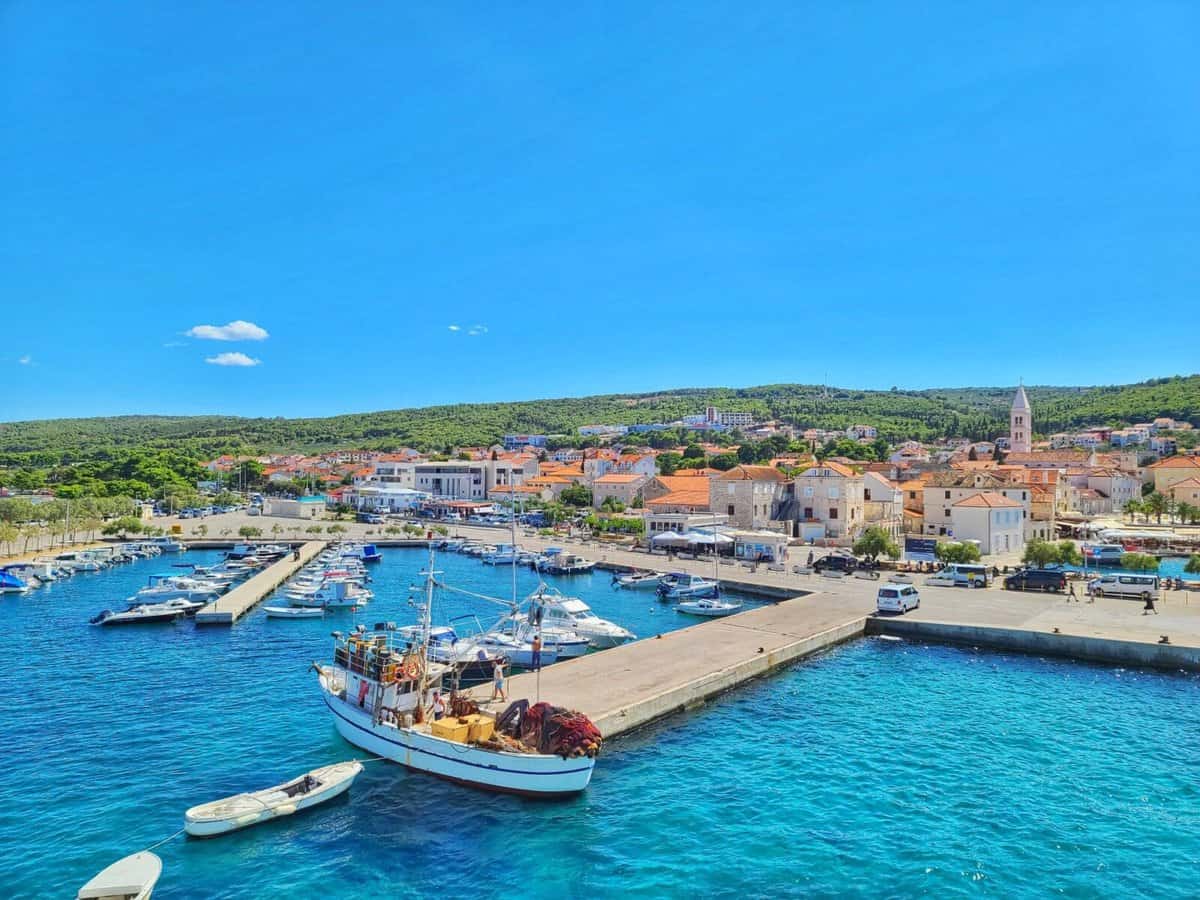
And for those who want to explore beyond the city limits, there are plenty of day trips to choose from, including:
- The nearby town of Trogir
- Krka National Park & Plitvice Lakes National Park
- Brac Island (Zlatni Rat Beach in Bol is a must-see)
5. Food & Nightlife
Foodies and night owls rejoice – Split offers an array of dining and nightlife options to suit every taste.
For those who like to eat (and drink) local, there are plenty of traditional Croatian restaurants serving up dishes like ćevapi, sarma, and strukli.
If you’re looking for something a little more international, you’ll find everything from Italian to Indian cuisine.
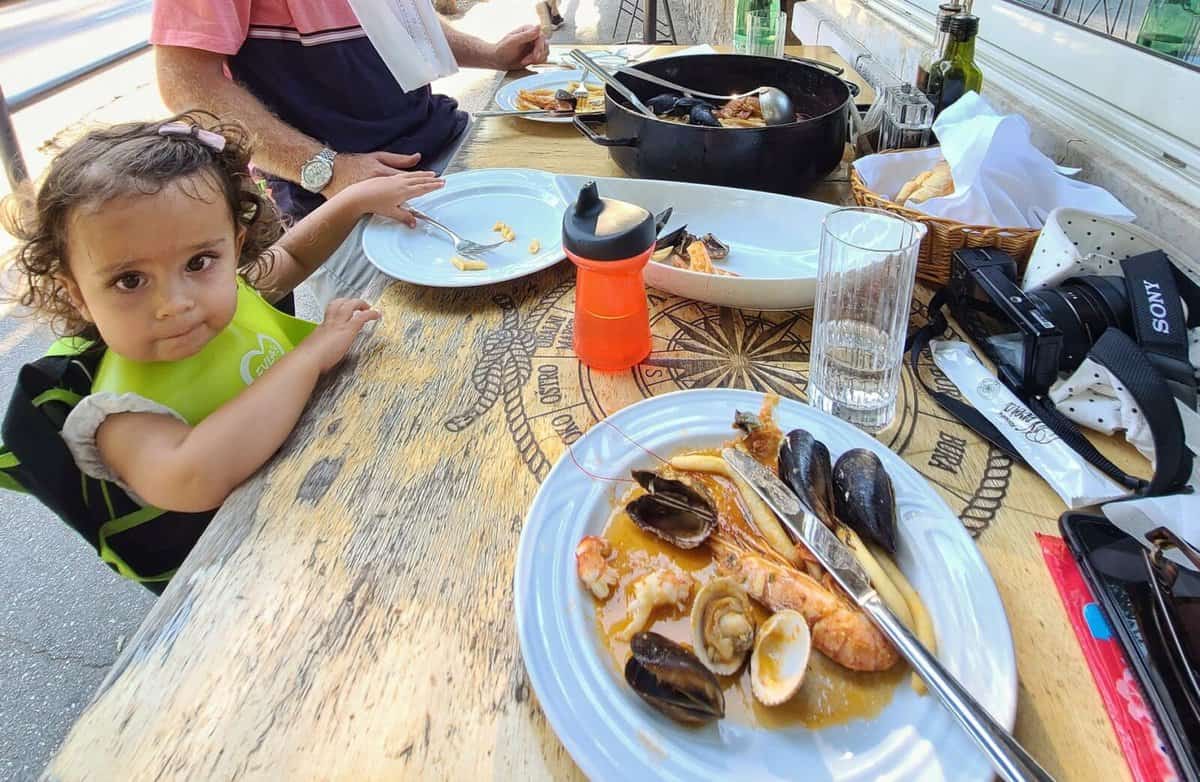
And of course, no night out in Split would be complete without enjoying a few drinks at one of the city’s many bars and clubs on the Riva.
Whether you’re looking to relax with a glass of wine or dance the night away, Split has you covered.
Dubrovnik is renowned for its seafood, and there are plenty of restaurants where you can enjoy fresh fish dishes.
For those who prefer something more hearty, there are also a number of excellent meat-based options.
The best gelato (yes even compared to Italy) is right here in Dubrovnik…in our humble opinion anyway!
In terms of nightlife, there are cosy bars where you can sample the local Croatian wine, but the options are limited when compared with Split.
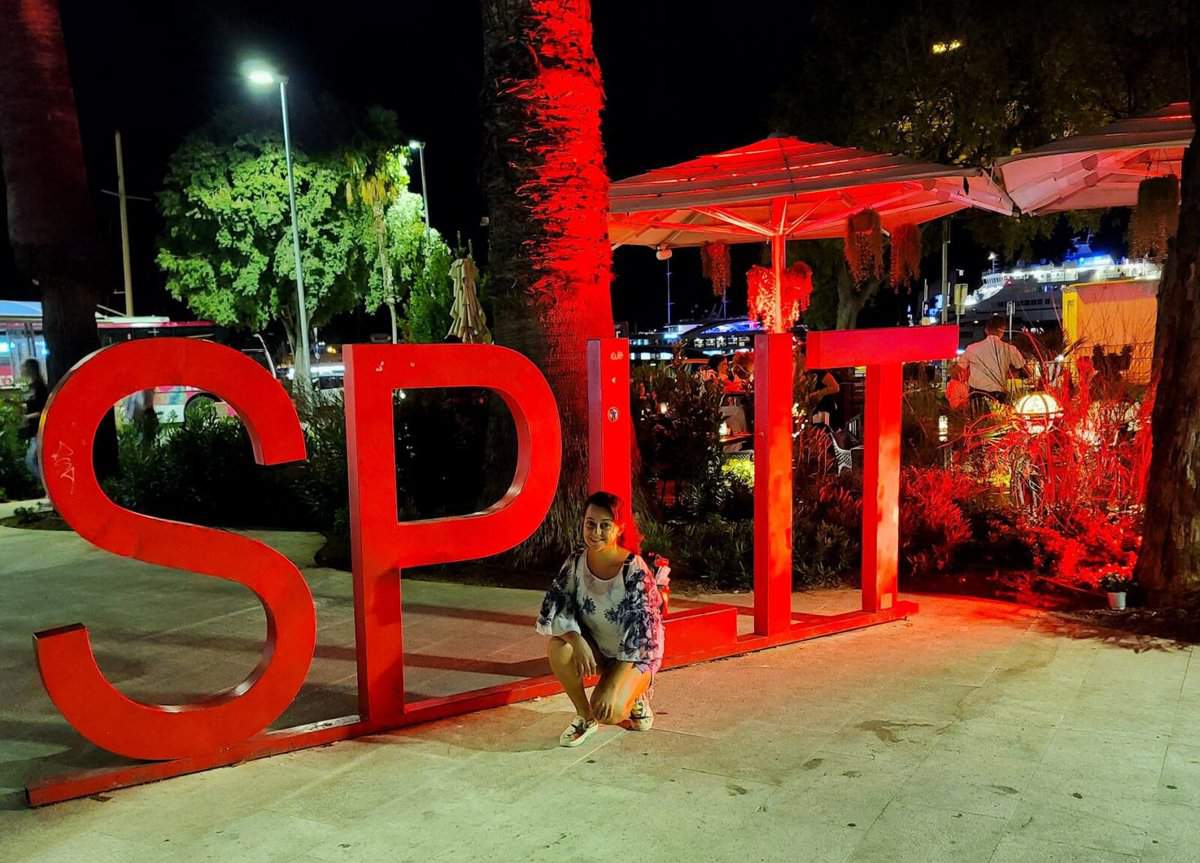
6. Weather In Split And Dubrovnik
Weather in Split and Dubrovnik can be quite different depending on the time of year.
In the winter, Split is generally colder and wetter than Dubrovnik. The average temperature in Split in January is around 45 degrees Fahrenheight, with occasional snowfall.
In Dubrovnik, the average temperature is a few degrees warmer, and it rarely snows. However, both cities can experience windy conditions in the winter months.
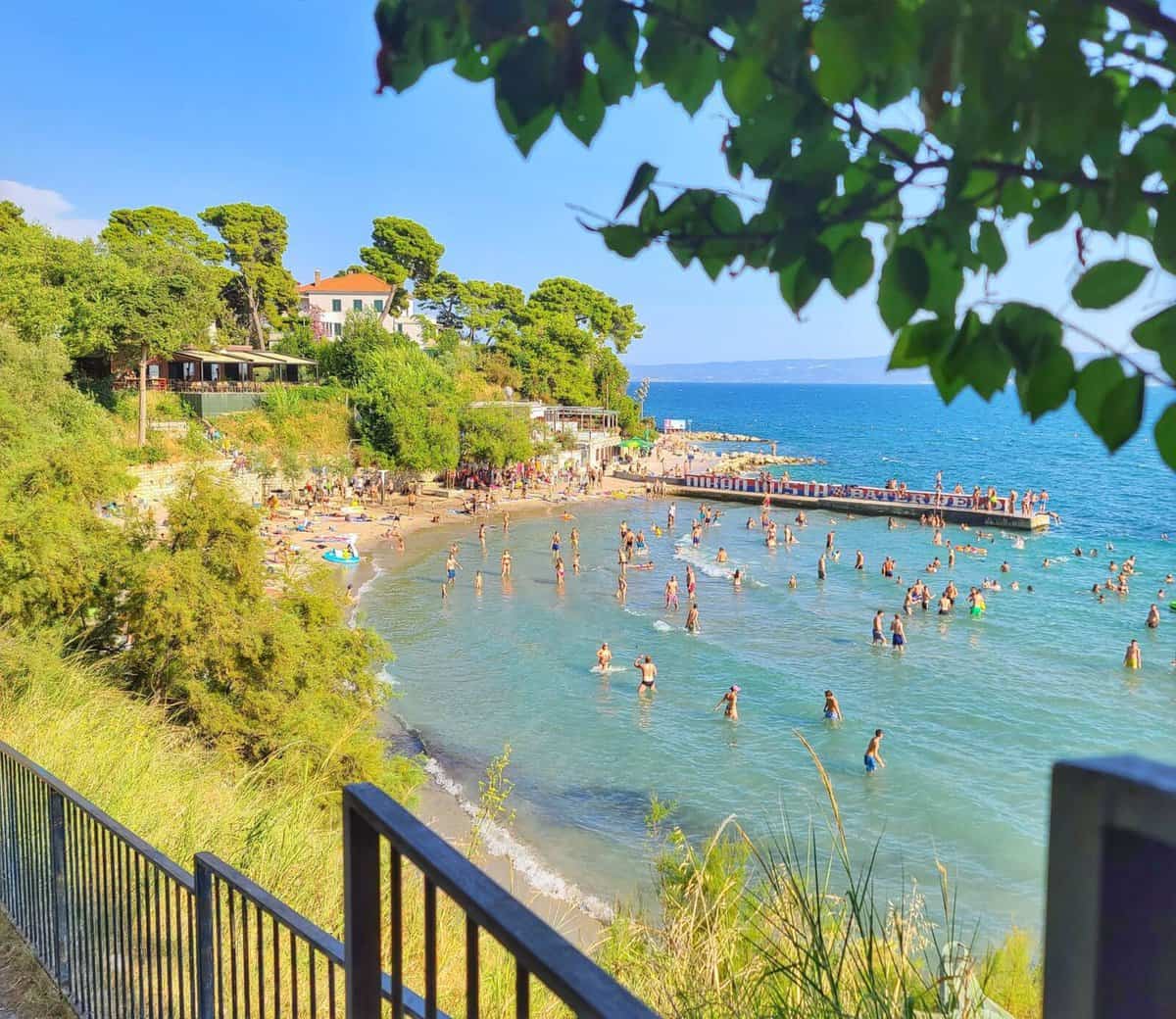
Spring weather is generally milder in both Split and Dubrovnik, with average temperatures in the hight 50s to low 60s.
The weather becomes increasingly warm and sunny as summer approaches.
This is the best time of year, along with September when temperatures begin to cool down again, to visit either city for a more peaceful and enjoyable time with less crowds.
July and August are the hottest months, with average temperatures in Split reaching 82 degrees, and slightly cooler temperatures in Dubrovnik.
7. Is Split Cheaper to Visit or Dubrovnik?
The answer is complicated.
Split is usually cheaper than Dubrovnik, although it depends on the time of year you visit. Overall, Split is a great choice for a budget-friendly family vacation.
A number of factors, including the time of year and the type of accommodation, can affect the overall cost of a trip. However, in general, Split is likely to be slightly cheaper than Dubrovnik.
Prices for food and drink are generally lower in Split than in Dubrovnik, and there are more affordable accommodation options available.
Of course, this is not always the case – during peak tourist season, prices in Split can rise significantly.
If you want to splurge, staying right inside the walls of Dubrovnik’s Old Town is a magical experience. Imagine walking out and being in one of the narrow alleyways that meander through the historic town!

8. Will You Visit Split or Dubrovnik?
So, Split or Dubrovnik better? It really depends on what you’re looking for in a vacation.
- If you want to experience some history, go to Dubrovnik.
- If you’re looking for a beach vacation, Split is the better choice.
- And if you want to save some money, Split is usually the cheaper option.
These two destinations are some of the nicest parts of Croatia to visit and Croatians are some of the most welcoming people in the world, so don’t be afraid to ask for directions or recommendations!
And finally, have a great trip! No matter which city you choose to visit, we know you’ll have a wonderful time.
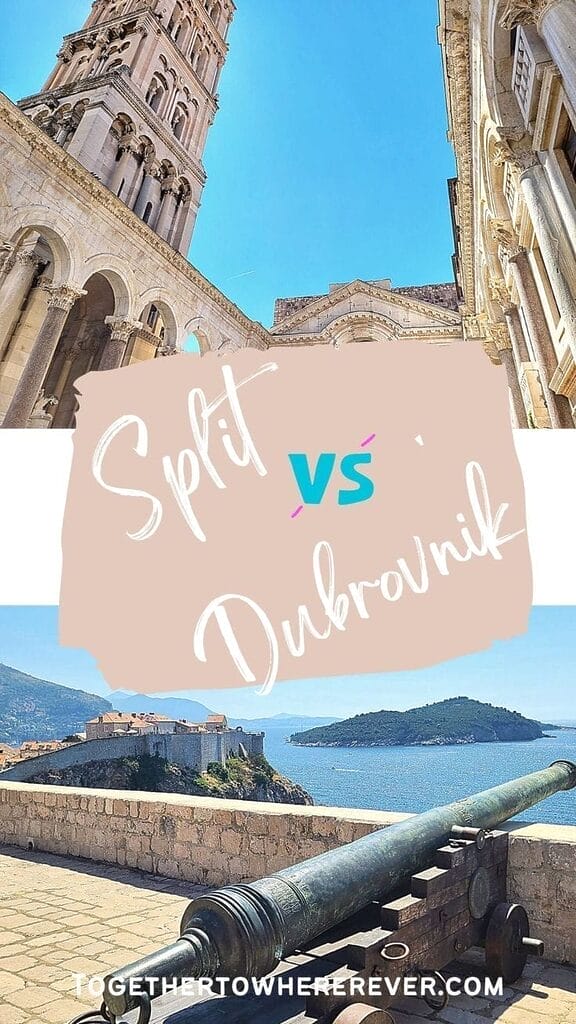

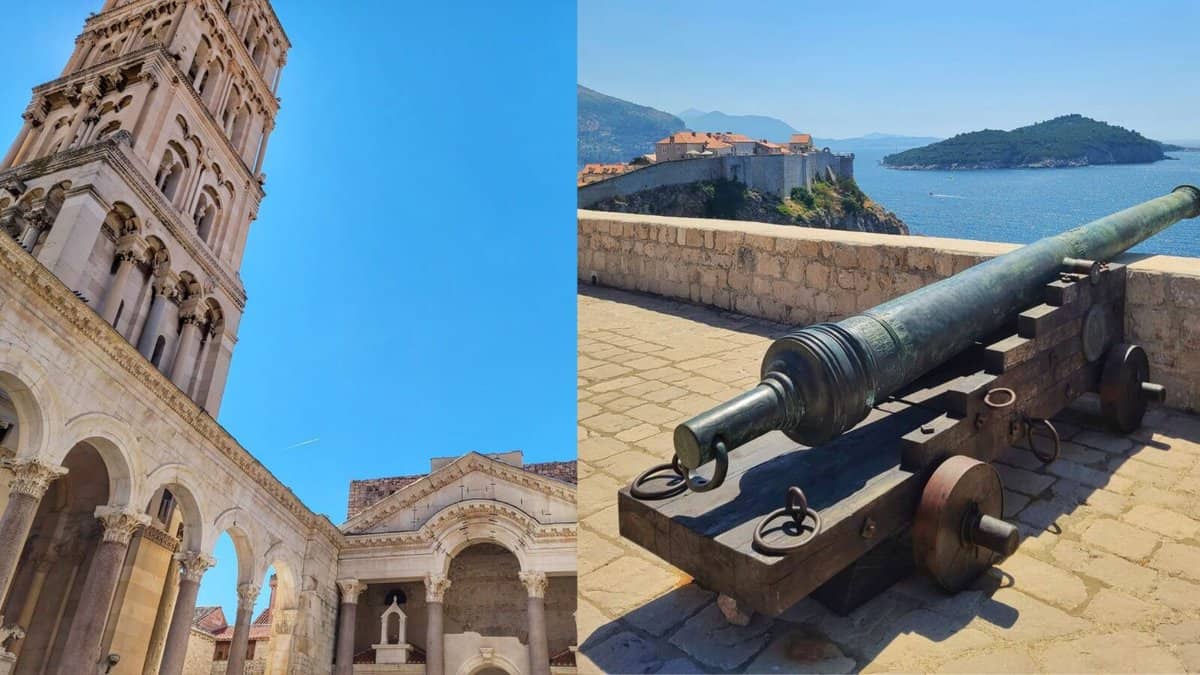
Leave a Reply